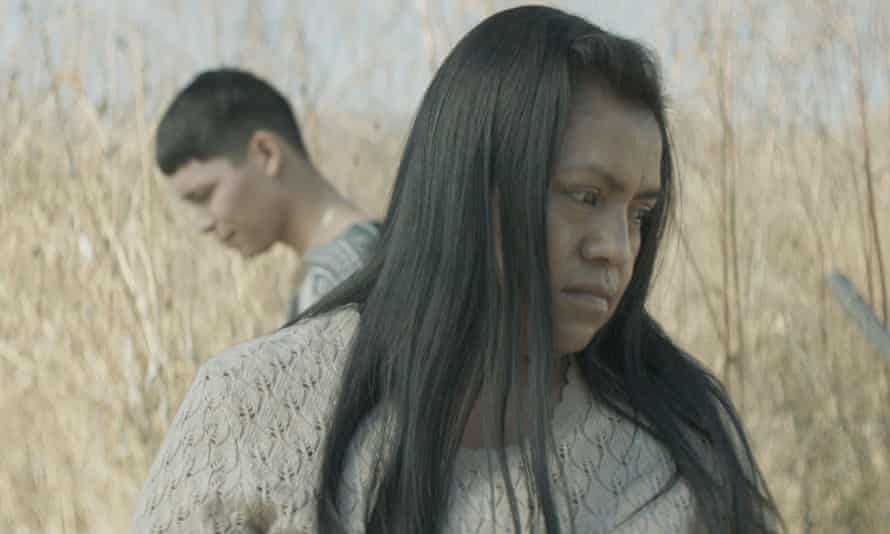[ad_1]
When young Ana is forced to have her hair cut in Tatiana Huezo’s film Prayers for the Stolen, her tears indicate the heartbreak of lost youth. It’s a protective measure taken by her mother who is desperate to prevent Ana from being kidnapped, like so many other young girls in their town have been, by the drug cartels who patrol the surrounding area. Prayers for the Stolen, the first fiction feature from Mexican-Salvadorian documentary-maker Huezo, captures the brutality and fear of growing up in such circumstances.
The facts are grim. An Amnesty International report released in September 2021 found that 10 women and girls are killed every day in Mexico. More broadly, the Congressional Research Service estimates that since 2006, 150,000 people have been killed in Mexico due to organised criminal violence. Propelled by drug wars and battles between cartels for new territory since the 1980s, how can art or culture reflect such a terrifying threat? Now a group of female film-makers, emerging and established, are tackling the violence in their work, creating urgent and disquieting cinema that brings the country’s horrors into the spotlight. Prayers for the Stolen sits alongside 2020’s Identifying Features and the forthcoming Robe of Gems, which recently won the Silver Bear jury prize at the Berlin film festival.

Identifying Features, directed by Fernanda Valadez and co-written by Valadez and Astrid Rondero, has won considerable acclaim. It follows a mother’s search for her son who disappears while attempting to cross the border in to the US. Ignored by the authorities, Magdalena (Mercedes Hernández) sets out on an odyssey of her own to discover what has befallen him. Robe of Gems, written and directed by Natalia López Gallardo, is a similarly blistering portrait of women navigating the escalating threat of danger, weaving together the stories of a police officer, a wealthy homeowner and her Indigenous maid to create a portrait of violence across class divides and social positions. All three films focus on women in their explorations of a country in chaos and set their stories against a backdrop of visual wonder, the vast expanses of Mexico and the granular details of its earth adding texture and intimacy to the work.
This focus is an important and welcome one. Mexico’s successes have been led for years by the likes of Guillermo del Toro, Alfonso Cuarón, Alejandro González Iñárritu, and the more experimental Carlos Reygadas. In the last decade, gender balance in Mexican film-making has only been found in documentary-making, but now Huezo, Valadez, Rondero and Gallardo are leading a movement of female-focused cinema. “I think in the next few years, we’re going to see more and more stories told from the female perspective coming from Mexico,” Huezo says, citing the increase in funding opportunities, crew roles and acceptances into film schools for women as key factors. Paving the way, she adds, were the likes of Maria Novaro, Dana Rotberg and Marisa Sistach, film-makers who emerged in Mexico in the 1980s having been among the first women to graduate from Mexican film schools.
The focus on telling stories about women and girls, too, is vital for Huezo. “There are many girls in Mexico who grow up having to hide their femininity to avoid being attacked or assaulted, when really that identity should be celebrated and cared for,” she says. “I thought it was an interesting and very urgent subject to tackle.” She adds: “When we’re young girls, we’re still bold enough to ask very direct curious questions such as: ‘Why aren’t we helping my teacher who’s been assaulted or kidnapped?’ It was really important for me to show them questioning this violent world.”

This recent surge of female-led works tackling Mexico’s violence, is reflected in literary circles too, most notably in the work of author Fernanda Melchor. Hurricane Season, published in 2017 and translated in to English in 2020, is unsparing in its vicious portrayal of a small town’s descent into hell. Melchor’s latest, Paradais, is an equally chilling study of sadistic machismo. As a growing feminist movement rises in Mexico in response to the country’s alarming rates of femicide, Melchor and this group of contemporary film-makers stand out as key voices in leading the cultural response.
Whereas Melchor’s work is shocking in its depiction of violence, Prayers for the Stolen adopts a more sensorial approach. “It’s a film that has a really strong sense of dread within the violence that underpins the story, and it was very important for me to build this fear that the girls and their mothers feel, how it destroys a person from the inside out,” Huezo says. “But I chose the path of not being explicit because violence is something that we see every day in Mexico. We see images of murdered women, of mutilated bodies. I think that the overconsumption of this spectacle of violence has distanced ourselves from the reality of it.” Alongside Identifying Features and Robe of Gems, Huezo’s film finds its power in the tension and threat of the unseen, and often unspoken, trauma that hangs over these communities, offering new perspectives and new voices on a decades-old problem.
[ad_2]
Source link













